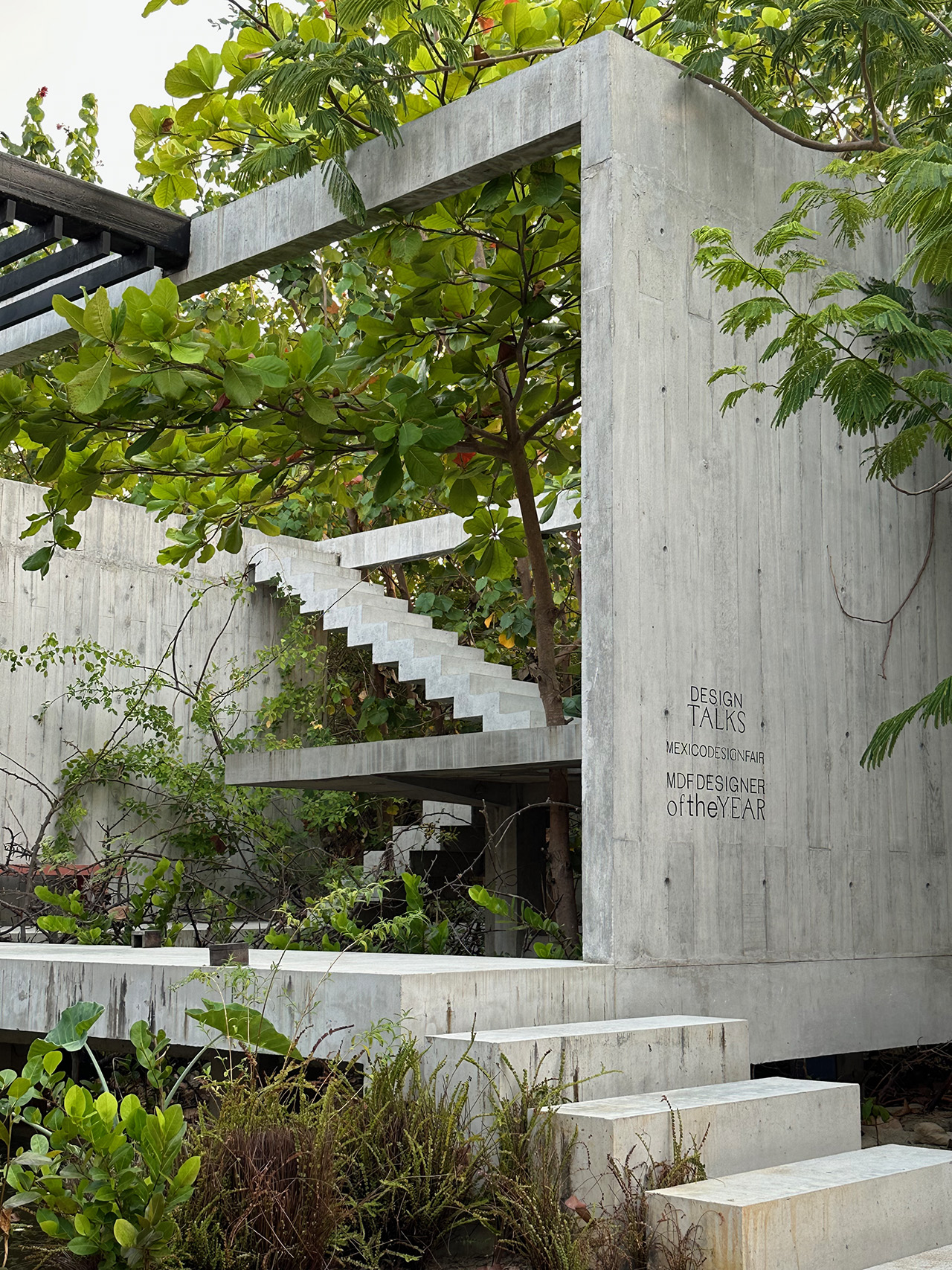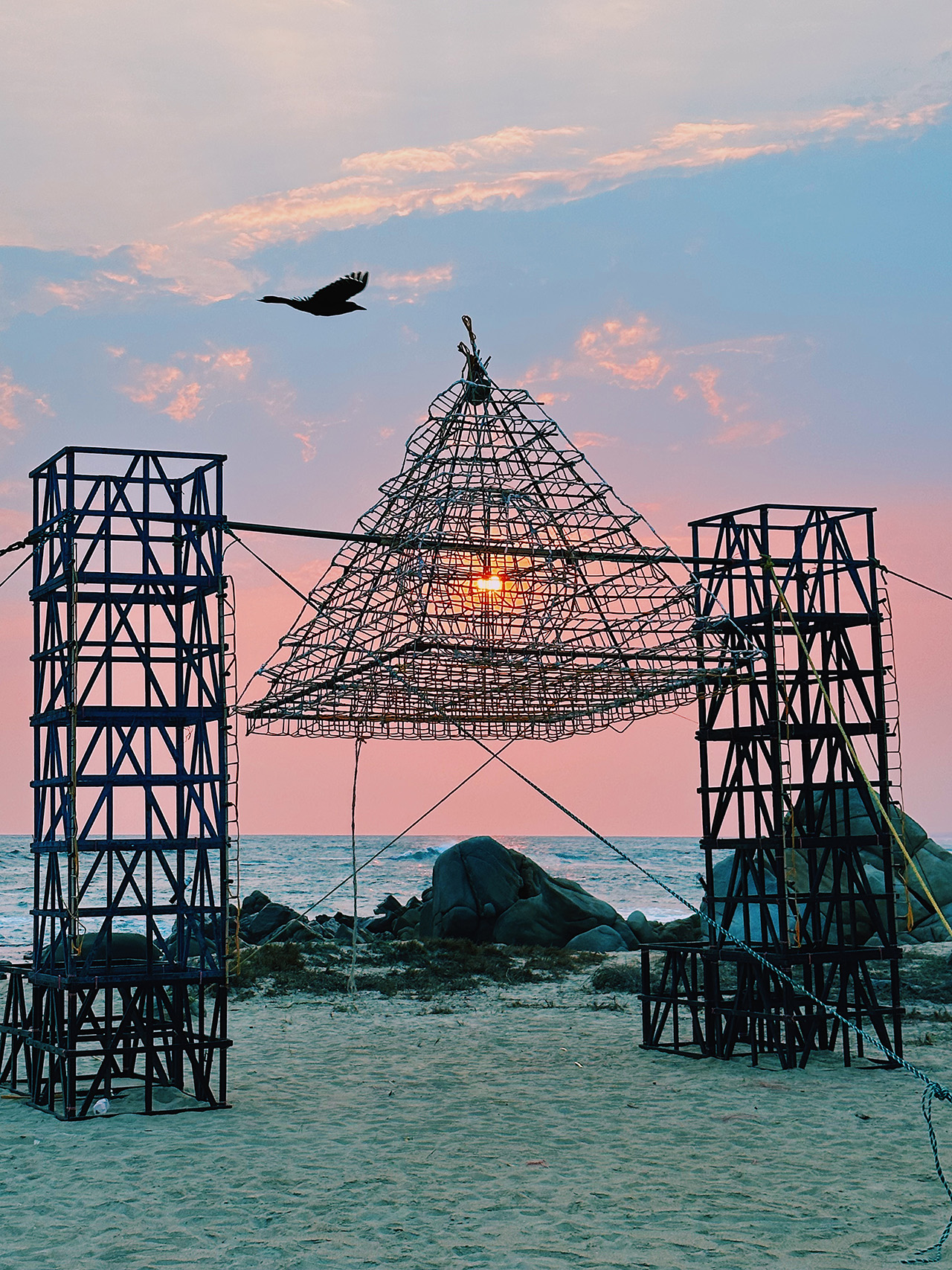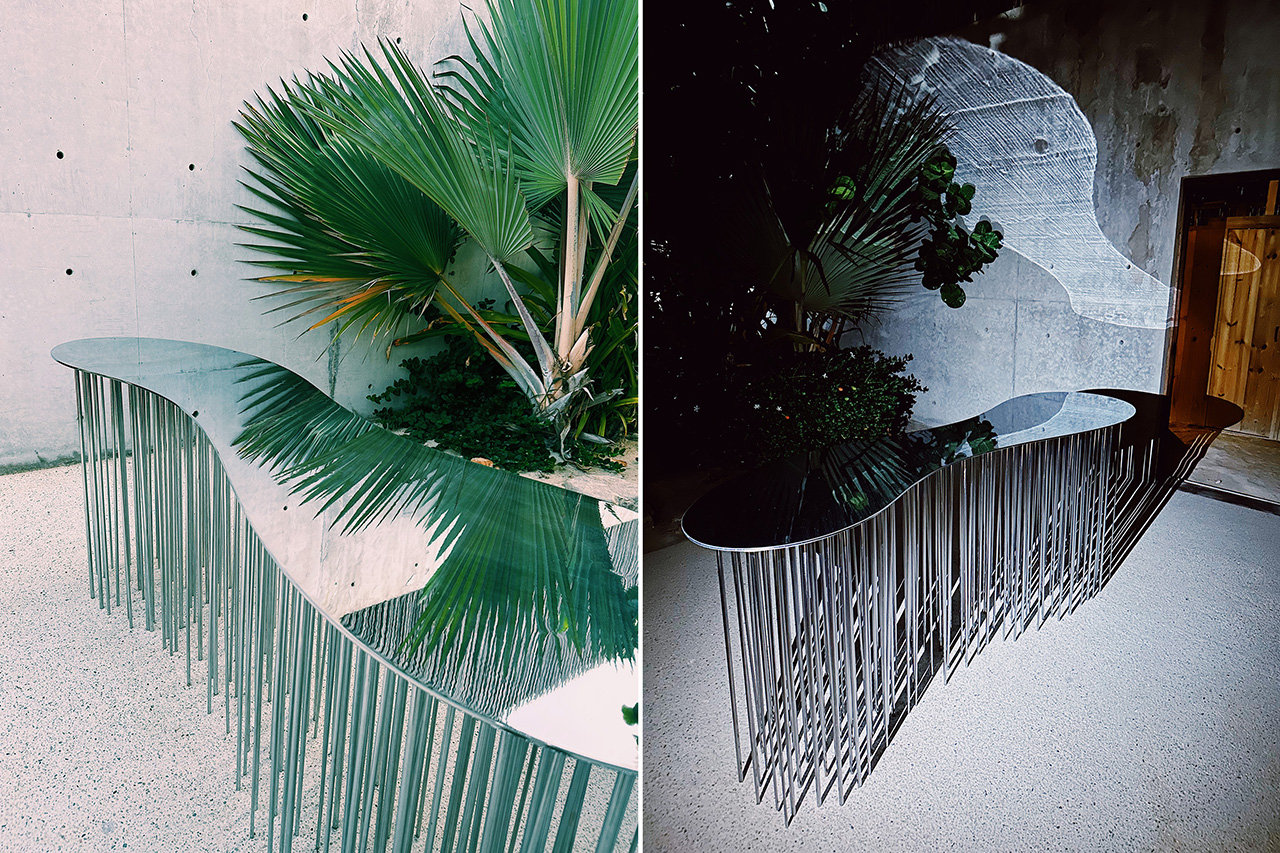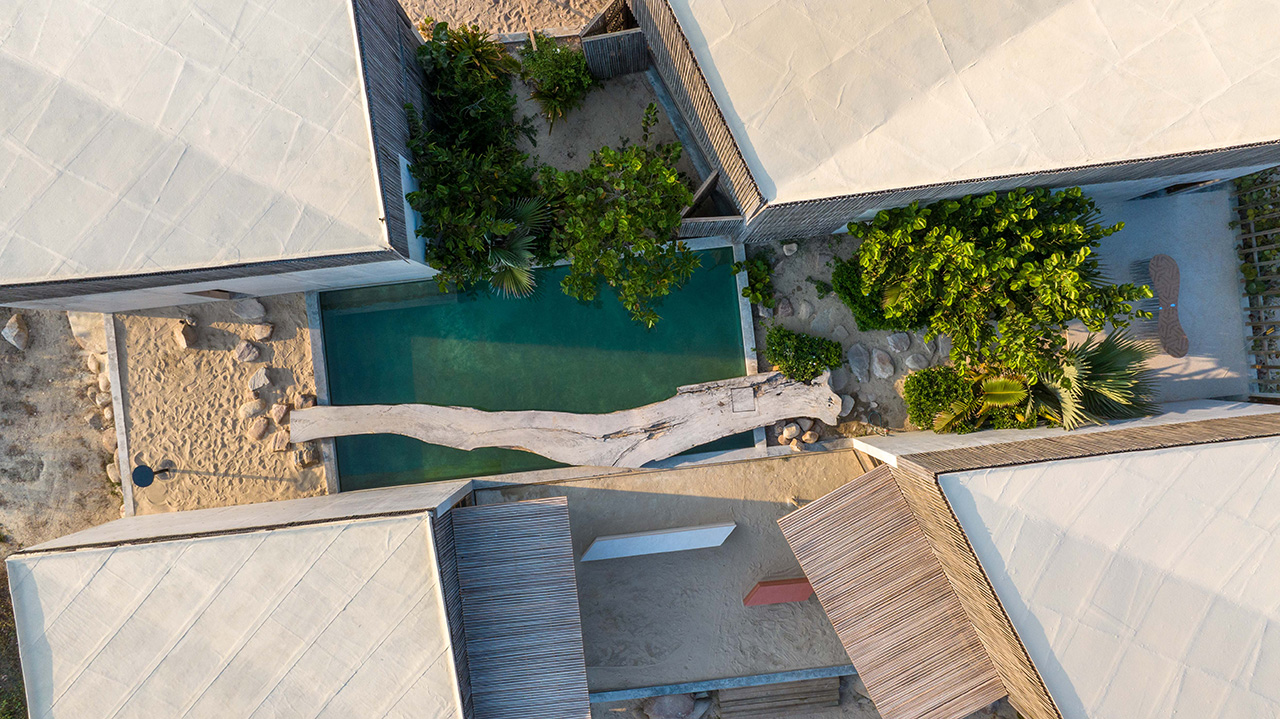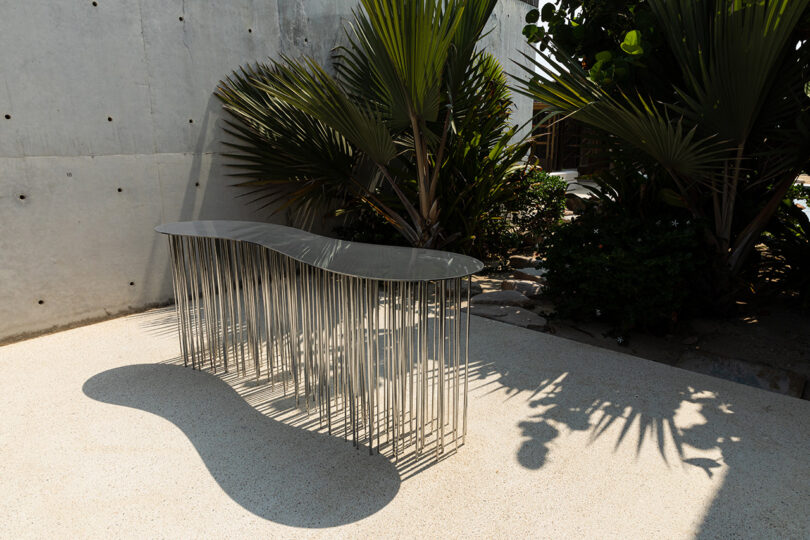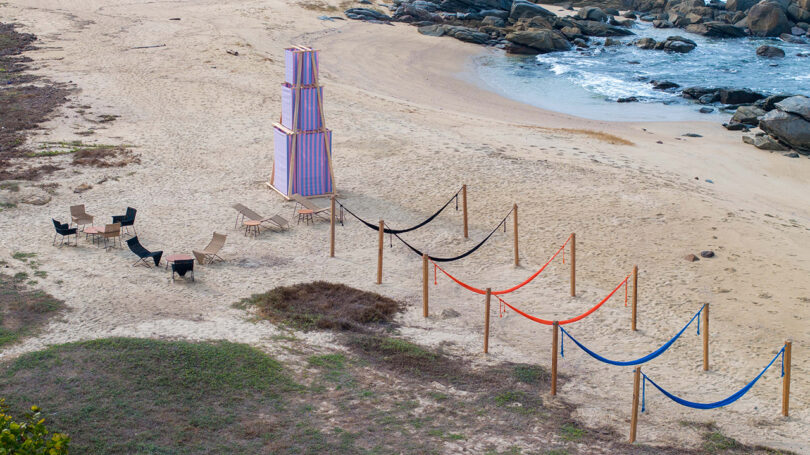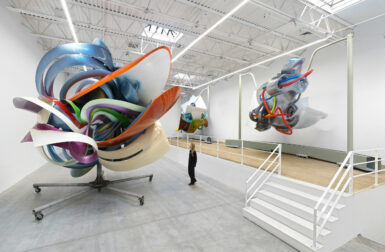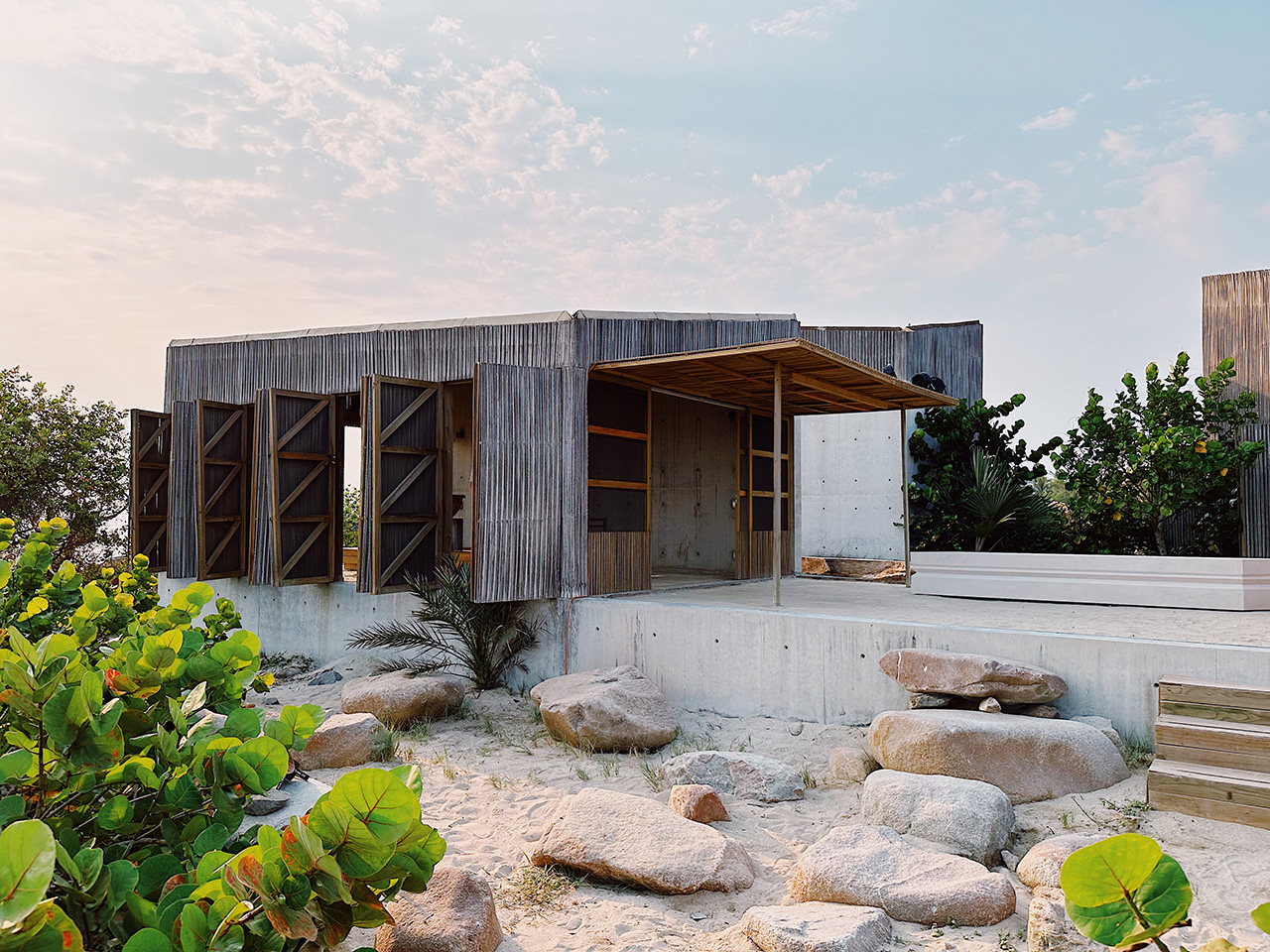
It’s been a short while since I’ve returned from the sultry Oaxacan coastline of Puerto Escondido, Mexico, after attending the third annual Mexico Design Fair. Unexpected plumes of volcanic ash blanketing Mexico City delayed arrivals and departures, foiling plans professional and personal alike. In hindsight, the pause offered a opportune moment to reflect upon both the parts and the sum of an event devised to spotlight the best of contemporary Mexican design, one as warmly memorable as the Pacific sunset that played backdrop for the entirety of our stay.

Situated on a 20,000-square-foot stretch of private Oaxacan beach, Casa Naila presents the central exhibition stage for a design fair unlike any other, inviting guests to meander at a thoughtful pace from one “room” to another. \\\ Photo: Gregory Han

One of four main exhibition displays within Casa Naila curated by Carlos Torre Hütt emphasizing the region’s use of woven traditions reinterpreted into contemporary forms, including Hütt’s own Biombo Z wicker screen in yellow, Zebra table by Pedro Friedberg, and Porset lounge chair by Clara Porset. \\\ Photo: Gregory Han

Casa Naila’s four volume residence designed by BAA’Q Architects offered a gallery-like setting for attendees to experience the designs in changing light throughout the day. \\\ Photo: Jaime Navarro
Staged across various venues of architectural pedigree – Casa Naila, a beachside residence designed by BAAQ’s Alfonso Quiñones, Casa Malandra designed by Alberto Calleja, the newly revealed Meridiano gallery by architect Tatsuro Miki and Axel Vervoordt, not to mention a slew of destinations orbiting the fair such as Tadao Ando designed Casa Wabi, many deserving of an architectural pilgrimage themselves – MDF vacillates between the intimate and social, quiet and celebratory, obvious and revelatory against a dramatic coastal backdrop.
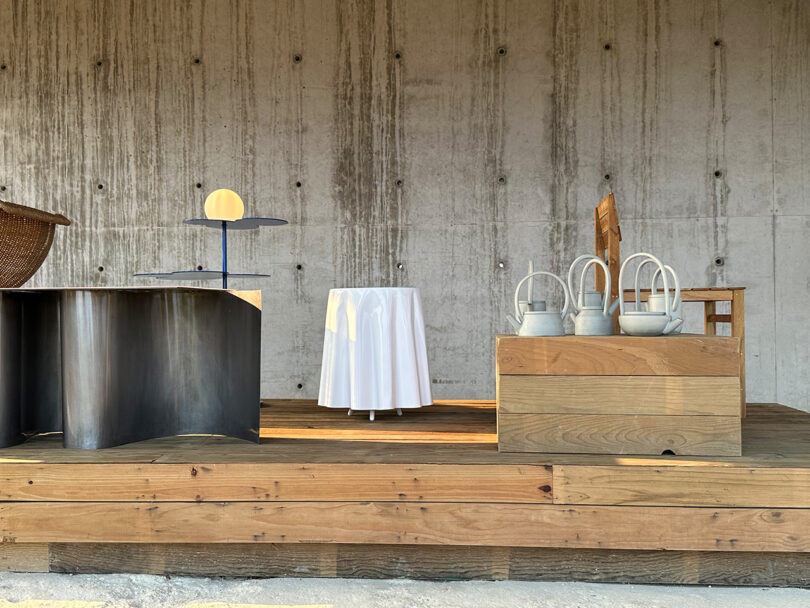
Mexico Design Fair’s press preview offered media intimate access to the numerous installations staged within Casa Naila dramatically staged along Puerto Escondido’s coastline. From left to right: Wavy Bench, Bloom side table, and Ghost stool by Lyzbeth Lara and Prem Lorenzen, Kind Void Gray ceramic teapot collection by Lucila Rodarte, and Ajolote chair by Daniel Romero Valencia. \\\ Photo: Gregory Han
MDF is staged as a testament to the numerous talents of contemporary design working across Mexico City and beyond, a creative scene that isn’t always given its proper dues north of its borders. The event is in some sense curated to illuminate and inform all attendees across its three days of tours, talks, and festivities, but also celebrate knowingly of their own growing importance – a manifestation of IFYKYK.
First and foremost is the incomparable daydream residence of Casa Naila, a four structure home opened to the elements and guests during Mexico Design Fair. Orchestrated by MDF founder and chief curator Carlos Torre Hütt, the beachside escape was made into a loosely woven narrative of rooms showcasing traditions of materiality unique to Mexico. A few favorites below:
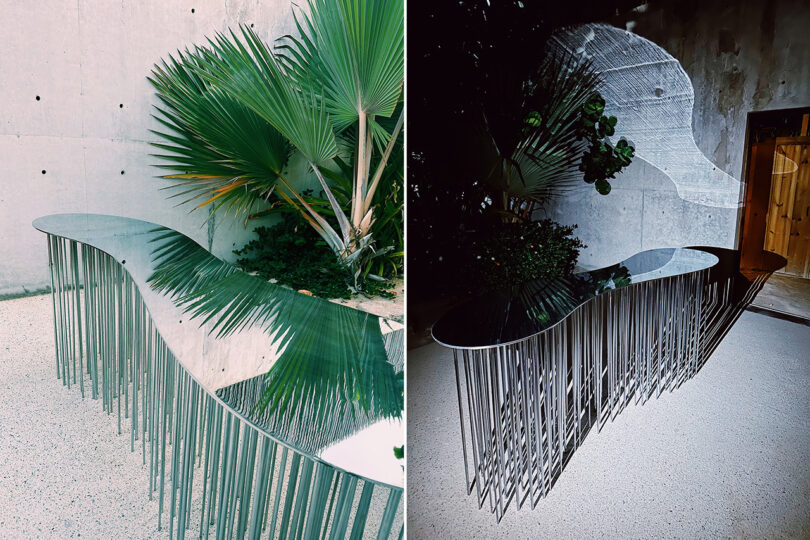
The flawlessly polished metal surface of the Rainfall console by Lyzbeth Lara and Prem Lorenzen/STUDIO LINE BETWEEN dazzled with its evolving presence reflecting color, light, and its surroundings, day thru night. \\\ Photos: Gregory Han
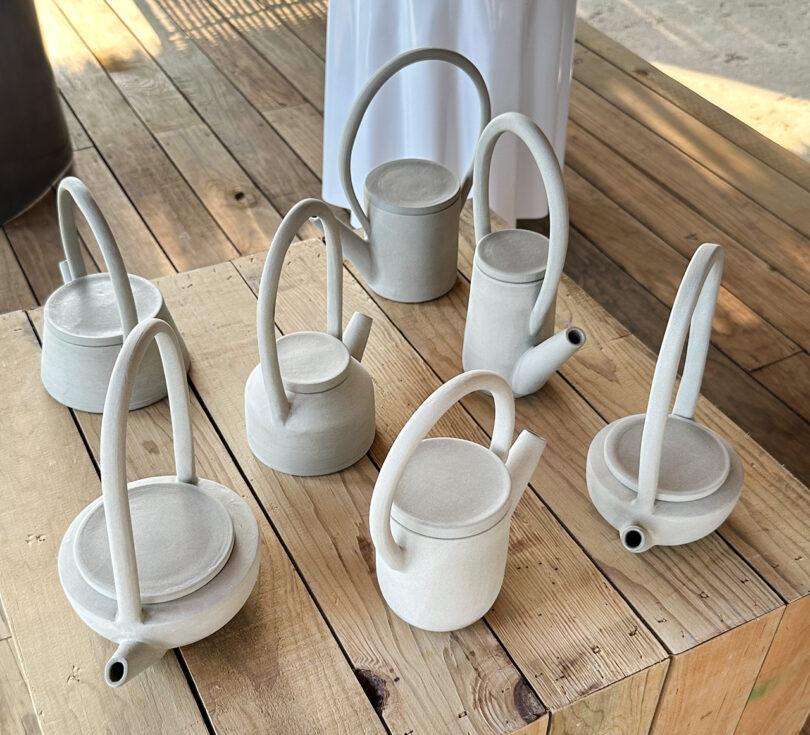
The arching handles impart the “Kind Void Gray” ceramic teapot collection by Lucila Rodarte a delicate sculptural elegance of a swan neck. \\\ Photo: Gregory Han
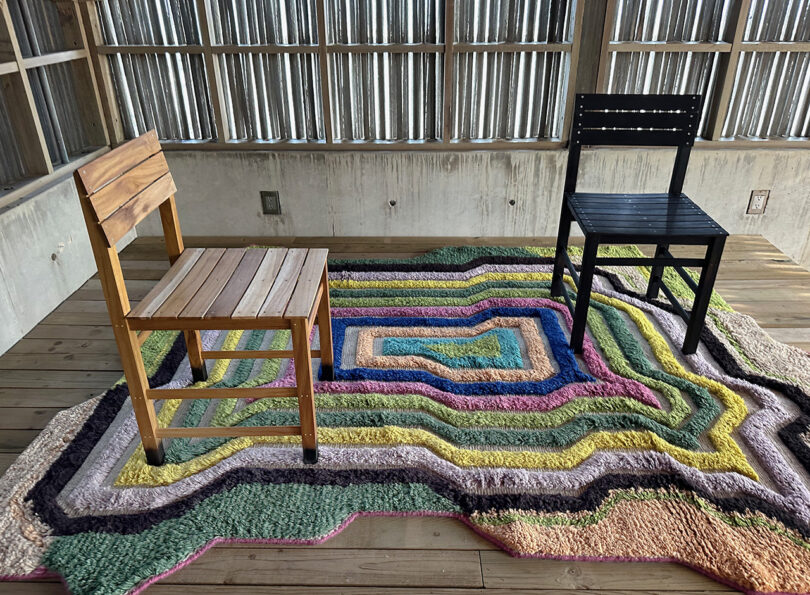
The mesmerizing chromatic geometry of “Portal in Wool” rugs by Venezuelan artist Johanna Boccardo for ODABASHIAN set along a pair of wood chairs – “Ajolote II” and “Ajolote III” – by Daniel Romero Valencia, the recipient of the 2023 MDF Designer of the Year award. \\\ Photo: Gregory Han
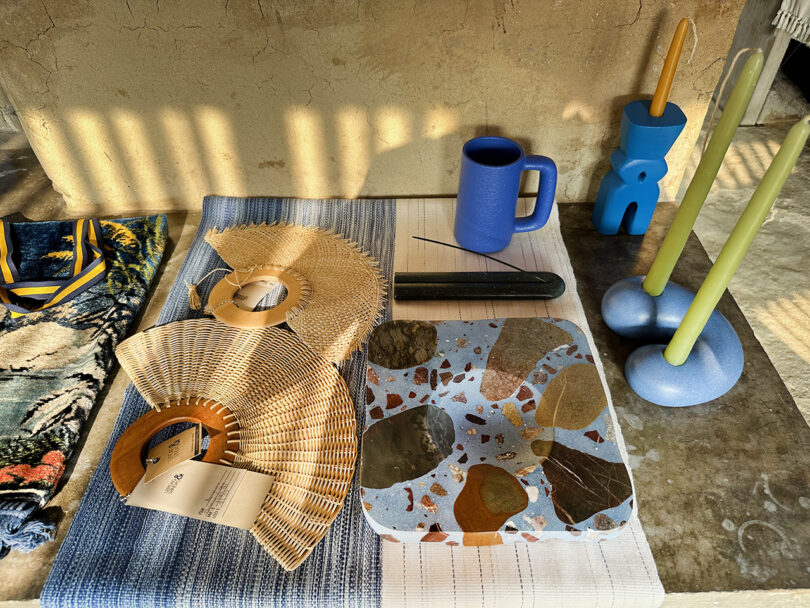
Casa Naila’s kitchen was converted into a showroom/gift shop for Guadalajara-based Albergue Transitorio,
displaying a range of design objects, crafts, accessories, and jewelry. \\\ Photo: Gregory Han
Set along to complement the main exhibition within Casa Naila, Fernanda Antillón and Mariano Rodea of the Leon based firm Casa Blanca Oficina worked with Javier Marín Foundation’s Fábrica de San Pedro in Uruapan, Michoacan to erect a shade structure that operated both as totem and refuge from the elements – soft architecture designed for temporary inhabitance, respectful of its imprint upon the site.
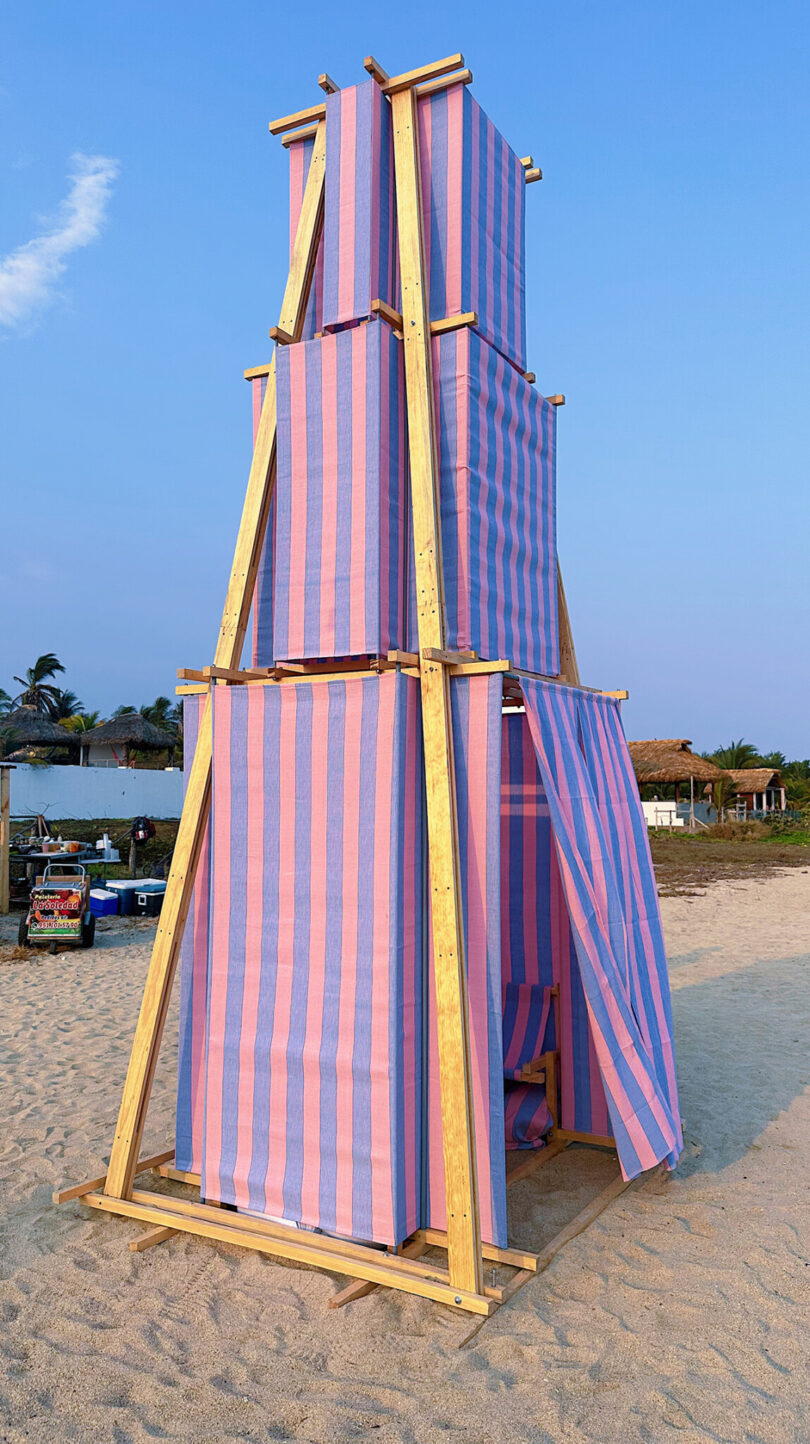
Activated by the gentlest presence of an ocean breeze, Casa Blanca Oficina’s fabric paneled wood framed shade structure flaps open, welcoming attendees into an intimate face-to-face seating interior. \\\ Photo: Gregory Han
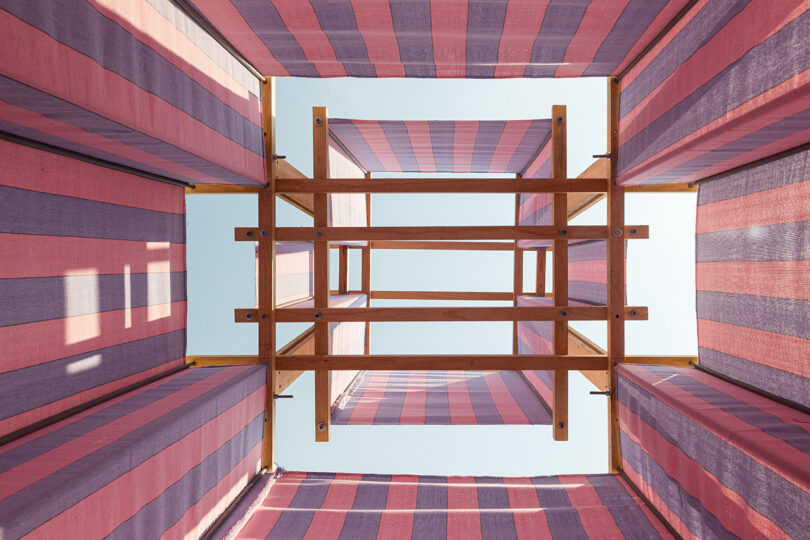
A glance upward revealing the structural framework of Casa Blanca Oficina’s thoughtfully constructed shade structure, engineered to withstand the ocean breeze.\\\ Photo: Gerardo Maldonado

Mexico City–based designer Daniel Romero Valencia was awarded Designer of the Year framed within the Escher-esque brutalist confines of architect Alberto Calleja’s Casa Malandra. Photo: Gregory Han
The 2023 Mexico Design Fair concluded with a literal bang, dazzling beachside guests and locals with a pyrotechnic show choreographed by Canadian artist Brendan Fernandes incorporating traditional Mexican handcrafted “castillos” (castles) and “toritos” (little bulls) set ablaze to music.
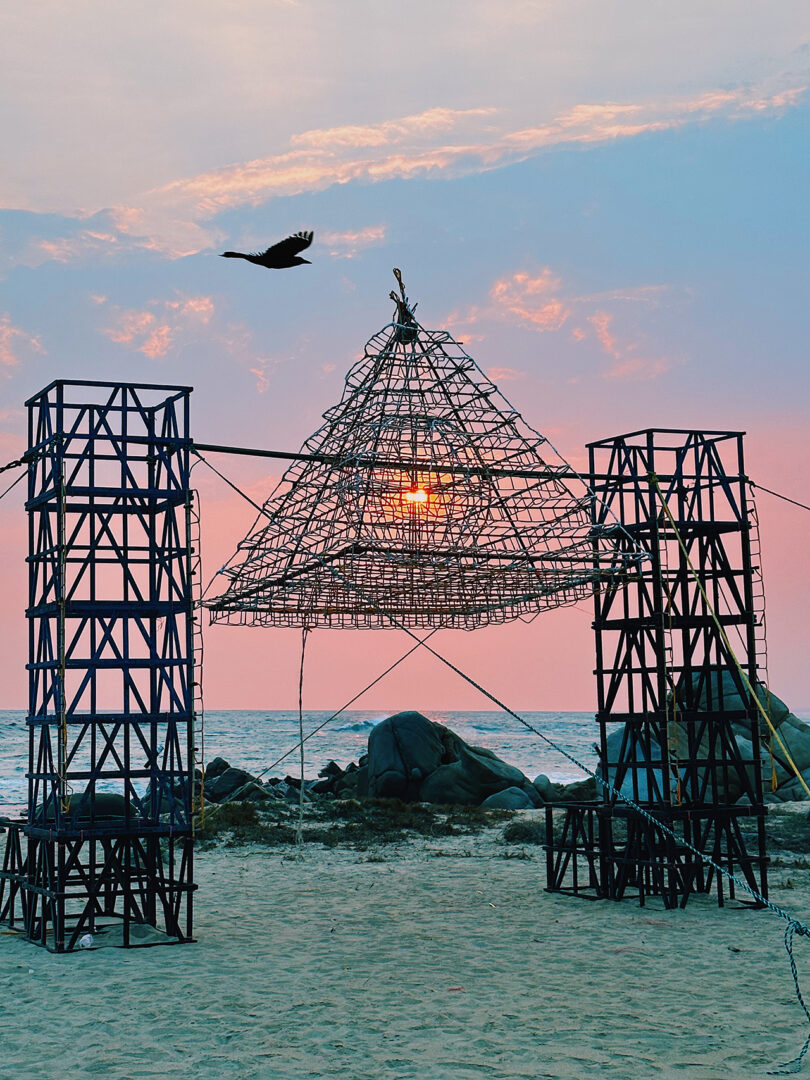
The pyramid frame centerpiece, a Mexican portable pyrotechnic structure that would later be set ablaze into an explosive conclusion complemented by a dance program choreographed by Canadian artist Brendan Fernandes. Photo: Gregory Han
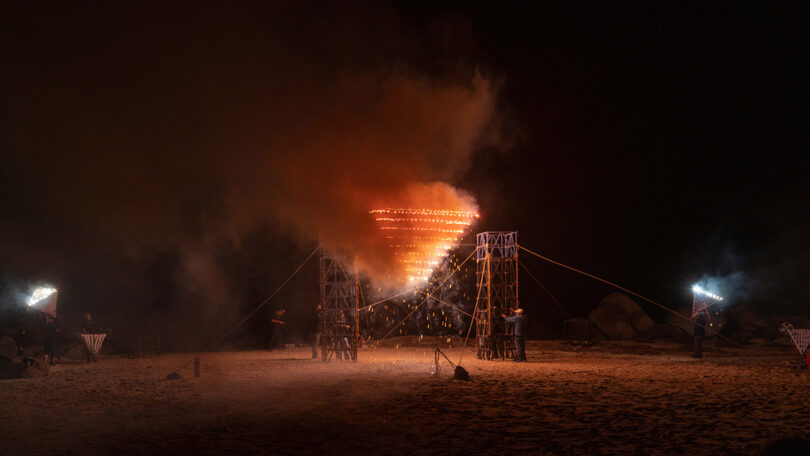
Fernandes’ sculptural pyrotechnic installation “The Light Will Call” represents a collaboration with the Martínez family from Salamanca, Guanajuato, a team with generational experience handling fireworks so intimately. The pyramid was inverted at the start of the program, becoming a symbol of newness and a sign for Queer space and otherness, then dissolving into a slowly burning sphere, “representative of a new day and the beginning of a new tomorrow.” Photo: Jaime Navarro
Noting the growth of Mexico’s contemporary design scene, Mexico Design Fair’s imprint will continue to deepen globally. Yet in attendance the event’s organizers reveal a welcome appreciation in nurturing an intimate and natural ambiance where designers and collectors alike are allowed to organically develop an understanding of the who, how, where, and why behind each design – an opportunity often absent during larger and crowded traditional trade shows. Here along the Oaxacan coastline, each object’s material and form are given a valuable context tied to landscape, the craft/artisan culture, and history of Mexico itself, washing upon the mind in rhythm with the ever-present crashing of the waves.


